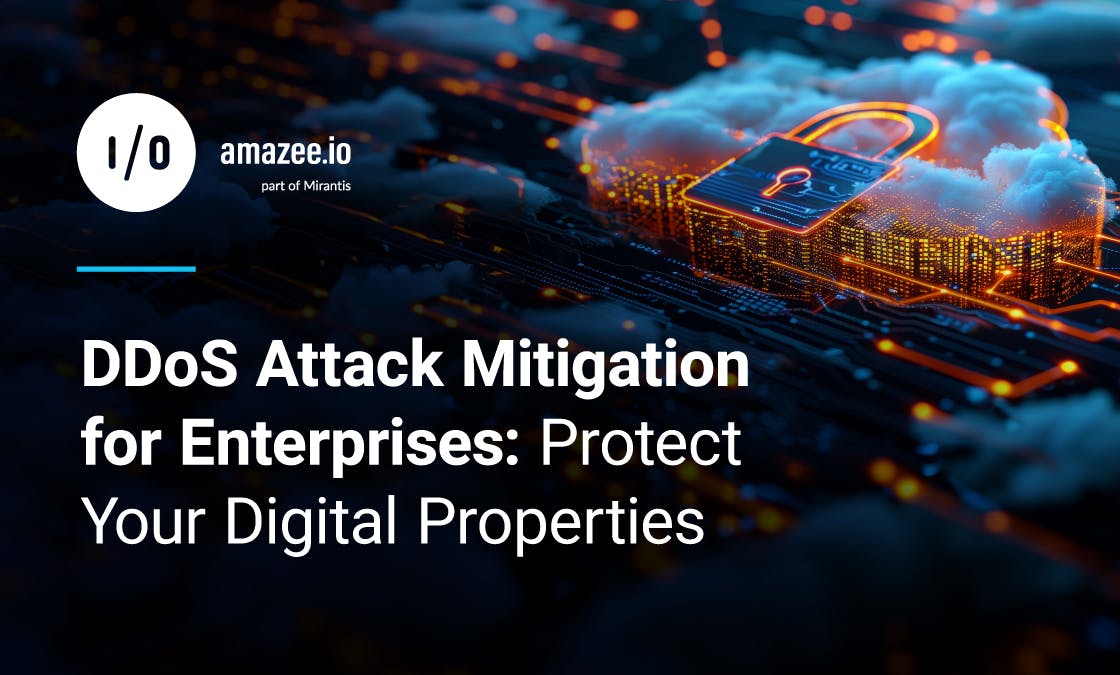Sean Hamlin
|
Sep 03, 2024
|6 min read
Search Topic

Distributed Denial of Service (DDoS) attacks continue to be common and are becoming increasingly sophisticated. At amazee.io, we understand the critical importance of mitigating these evolving threats and attacks and protecting your enterprise’s online presence and tools. That's why we've partnered with Fastly, a leader in edge cloud platforms and security services, to provide robust DDoS attack prevention and protection for our clients.
DDoS attacks are growing in number and complexity. Traditional mitigation techniques, such as simple country-based IP blocking, are often ineffective. Attackers now frequently use botnets—networks of thousands of compromised computers spread across multiple countries—to launch attacks, easily circumventing basic geographic restrictions.
At amazee.io, we leverage Fastly's powerful global network and advanced security features to prevent harmful attacks and protect your digital assets.

Fastly boasts the following features, making our partnership with them an easy choice.
The following graphic shows the different levels of DDoS attack prevention and protection for various attack levels and the Fastly products and services we leverage to provide you with world-class security.

ℹ️ Source
Fastly's network automatically mitigates Layer 3 and Layer 4 DDoS attacks. These lower-level attacks attempt to overwhelm network infrastructure by consuming vast amounts of bandwidth. We ensure your websites and apps remain online and responsive by filtering out this malicious traffic at the edge before it reaches our origin servers.
To mitigate more complex Layer 7 (application layer) DDoS attacks, we employ a multi-faceted approach:
We implement custom filtering rules using Fastly's Varnish Configuration Language (VCL). These rules help mitigate basic DDoS attacks and filter out junk traffic, providing additional application protection.
We implement additional rules in Fastly VCL for clients with specific security needs. For example, we can restrict login attempts to originate only from specific IP addresses, adding an extra layer of security to sensitive areas of your site.
We use Fastly's Mission Control product to monitor your traffic patterns continuously. This tool alerts our team to anomalies, such as sudden increases in HTTP 50x errors or unexpected traffic spikes, allowing us to respond quickly to potential threats.
We offer an optional Advanced WAF service for clients requiring even more robust protection. Based on Fastly's Advanced WAF (formerly SignalSciences), this solution provides cutting-edge protection against application-layer attacks and enables sophisticated rate-limiting rules.
To learn how to protect your website with CDN & WAF, watch our webinar “Speed & Shield.”
We offer robust real-time monitoring and control capabilities through our partnership with Fastly. Our platform provides instant access to data logs and historical statistics, enabling us to swiftly identify suspicious activities, including sudden traffic spikes that may indicate a DDoS attack. This real-time visibility allows for immediate troubleshooting and response. Moreover, we can implement real-time configuration changes using Varnish Configuration Language (VCL), a flexible and powerful tool for creating custom security rules. With Fastly's optimized Varnish implementation, we can deploy new DDoS attack mitigation rules in less than a second, providing rapid protection against emerging threats. This level of granular control allows us to create rules based on any aspect of HTTP requests or responses, offering a highly adaptable defense against a wide range of potential attacks.
Read our case study to learn how we implemented real-time monitoring and rapid response for the Züri Fäscht, Switzerland’s largest festival.
As DDoS attacks grow in frequency and sophistication, we are committed to constantly refining our security measures to protect your websites and apps. Combining amazee.io's expertise in managed Platform-as-a-Service (PaaS) hosting with Fastly's industry-leading security solutions, we provide a comprehensive defense against the ever-evolving landscape of DDoS threats. We aim to ensure your digital presence remains secure, performant, and ubiquitously available, allowing you to focus on what matters most—your business.
For more information about our security services or to discuss your specific needs, contact us today!
Uptime Monitoring is essential. Please read our article to understand what it is and how it works.
Enterprises have complex networks with geographically dispersed resources, making it difficult to pinpoint the attack source and implement mitigation strategies quickly. The sheer traffic volume during a DDoS attack can also overwhelm on-premise, unprotected, or unprepared infrastructure.
There are various DDoS attack vectors, but enterprises should be particularly vigilant against:
Costs can be significant, including:

